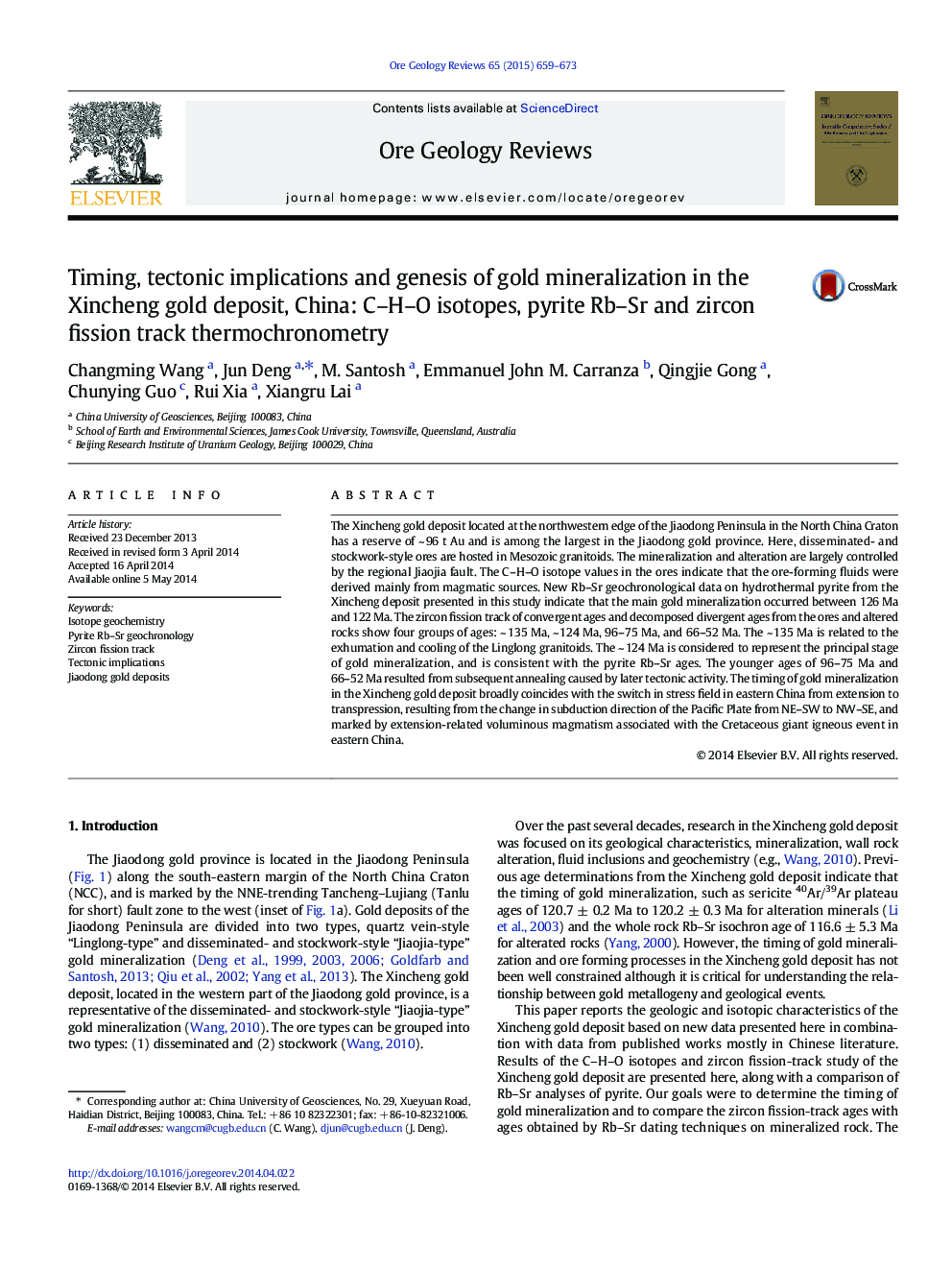| کد مقاله | کد نشریه | سال انتشار | مقاله انگلیسی | نسخه تمام متن |
|---|---|---|---|---|
| 4697283 | 1351869 | 2015 | 15 صفحه PDF | دانلود رایگان |

• Pyrite Rb-Sr ages of 126 Ma and 122 Ma demonstrate the timing of gold mineralization.
• ZFT age of 124 Ma correlates with the emplacement age of the Cretaceous granitoids.
• Gold mineralization are related to the subduction direction of the Pacific Plate.
The Xincheng gold deposit located at the northwestern edge of the Jiaodong Peninsula in the North China Craton has a reserve of ~ 96 t Au and is among the largest in the Jiaodong gold province. Here, disseminated- and stockwork-style ores are hosted in Mesozoic granitoids. The mineralization and alteration are largely controlled by the regional Jiaojia fault. The C–H–O isotope values in the ores indicate that the ore-forming fluids were derived mainly from magmatic sources. New Rb–Sr geochronological data on hydrothermal pyrite from the Xincheng deposit presented in this study indicate that the main gold mineralization occurred between 126 Ma and 122 Ma. The zircon fission track of convergent ages and decomposed divergent ages from the ores and altered rocks show four groups of ages: ~ 135 Ma, ~ 124 Ma, 96–75 Ma, and 66–52 Ma. The ~ 135 Ma is related to the exhumation and cooling of the Linglong granitoids. The ~ 124 Ma is considered to represent the principal stage of gold mineralization, and is consistent with the pyrite Rb–Sr ages. The younger ages of 96–75 Ma and 66–52 Ma resulted from subsequent annealing caused by later tectonic activity. The timing of gold mineralization in the Xincheng gold deposit broadly coincides with the switch in stress field in eastern China from extension to transpression, resulting from the change in subduction direction of the Pacific Plate from NE–SW to NW–SE, and marked by extension-related voluminous magmatism associated with the Cretaceous giant igneous event in eastern China.
Figure optionsDownload as PowerPoint slide
Journal: Ore Geology Reviews - Volume 65, Part 3, March 2015, Pages 659–673